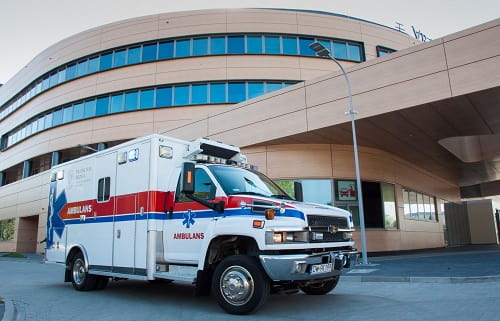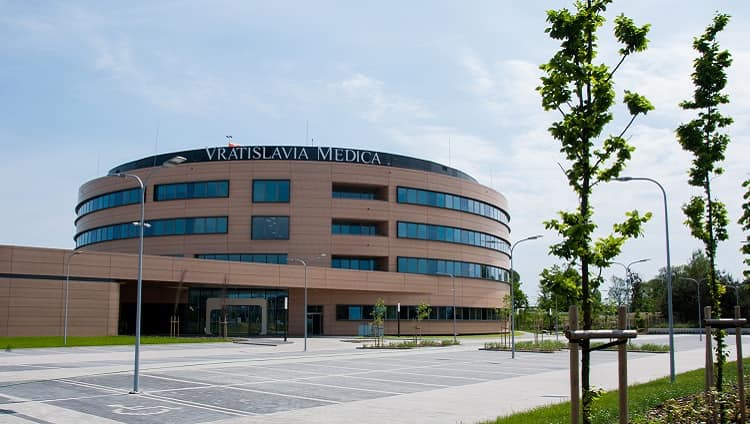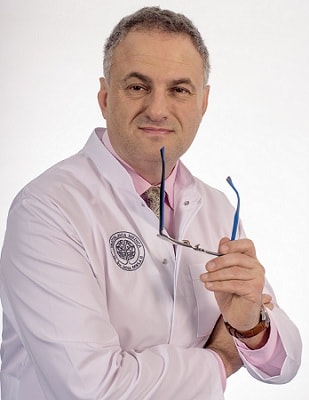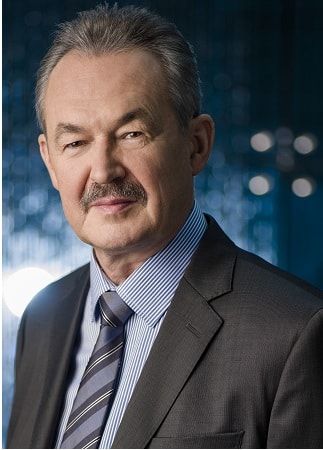Abstract
Athletic training can cause tremendous overload of the cardiovascular system and thus become a trigger for serious and even fatal cardiac events in athletes with a previously undetected underlying cardiovascular disease. Hence, every athlete should undergo a specialized diagnostic screening before a training program is prescribed or continued.
However, it is still an unresolved issue which of the diagnostic tools should be routinely applied in order to increase the safety of extreme physical training and reduce the risk of sudden cardiac death. Pre-participation athlete evaluation including a standard electrocardiogram (ECG), physical examination, and familial history of cardiovascular diseases is important, but does not always guarantee high diagnostic accuracy. The more common use of cardiac imaging techniques should become one of ways to improve diagnosis and better prevention of cardiovascular fatalities in athletes today.

The permanently growing interest in amateur and professional sport activities raises serious and justified concerns about athletes’ health, the safety of extreme physical training, and the sport-related risk of cardiovascular adverse events . In recent years there have been an increasing number of press reports on cases of sudden cardiac death among professional or amateur athletes during sport competition. Sudden cardiac death in young athletes is rather rare, but tragic. The incidence of sudden cardiac death and cardiovascular events in older athletes is higher and expected to rise as more and older individuals participate in organised sport [1].
Data on deaths and cardiac arrests recently assembled by Harris et al.from the U.S. National Registry of Sudden Death in Athletes and USA Triathlon (USAT) records demonstrate that deaths and cardiac arrests during the triathlon are not rare and most have occurred in middle-aged and older men [2].
Moreover, clinically silent cardiovascular disease was present in an unexpected proportion of decedents [2].The risk of unrecognized symptomatic or asymptomatic heart dysfunction or even heart failure (HF) in athletes increases with age [3,4].
At present,the number of elderly people willing to participate in sports continually grows. Moreover, a greater number of patients with a history of cancer treated with cardiotoxic therapy seek participation in sports [5].
Ambitious athletes in particular are inclined to dissimulate their cardiovascular symptoms or blame them on non-cardiac causes. The most challenging group are elderly athletes who often attribute their exertional dyspnoea or fatigue to ageing.
Faced with a growing number of “at risk” participants, sports physicians and cardiologists will be increasingly faced with the dilemma of qualifying this population for exercise. The tragic consequences of intensive physical effort reported among athletes with cardiovascular diseases should urge doctors, sport organization executives and coaches to become more aware of cardiovascular risk in athletes and athlete candidates.
In turn, cardiologists and sports physicians should answer the question:do we use enough powerful tools in the clinical setting to screen athletes and detect potentially life-threatening cardiovascular pathologies before the calamitous event happens?
Professional and amateur athletic training can cause tremendous overload of the cardiovascular system which in this situation may far exceed its ordinary exercise capacity.
Physical exercise may be a trigger for serious and often fatal cardiovascular events in athletes with an underlying heart or vascular disease. The extreme physical exercise can precipitate heart failure in athletes with a pre-existing heart dysfunction of various origins, i.e. acute myocarditis, drug abuse,doping, myocardial infarction, severe valve defect, uncontrolled arterial hypertension, toxic process or past medical interventions, such as chemotherapy or radiotherapy.
Athletic training can induce adaptive changes in the structure and function of heart as observed on echocardiography and electrocardiography (ECG) [6]. However, these physiologic changes referred to as the “athlete’s heart” may coincide with structural cardiac diseases. In the clinical milieu, it is sometimes difficult to detect a cardiac anomaly or differentiate between adaptive physiology and evident pathology in athletes without use of advanced cardiac imaging techniques.
According to the well-known mortality classifications, hypertrophic cardiomyopathy is the leading cause of sudden cardiac death in athletes. In addition, premature coronary artery disease, arrhythmogenic dysplasia of right ventricle, myocardial bridge, congenital anomalies of coronary vessels,bicuspid aortic valve, atrial septal defect and heart failure (HF) of various aetiologies can also contribute to cardiovascular fatalities in this population [7,8].Athletes affected by these pathologies can be asymptomatic and present with a normal resting electrocardiogram until the exercise-induced lethal arrhythmia or other cardiac events happen.
Dilated cardiomyopathy is the main cause of HF in athletes, while acute myocarditis is the most frequent cause of acquired dilated cardiomyopathy in young athletes [9]. The latter may run an asymptomatic course and present with normal resting electrocardiography in up to 32% of those affected [10]. A recent registry analysis demonstrates that myocarditis can be a dominant cause of sudden cardiac death in athletes under 35 [11].
The efficacy of pre-participation screening by standard medical history, physical examination and resting electrocardiogram for diagnosing above-mentioned cardiovascular abnormalities can be rather poor in many cases. Rizzo et al. argue that echocardiography significantly improves the diagnostic power of screening in the detection of serious cardiac conditions in the athletic population [12].
Professional sport organizations such as the NBA and NFL have recommended echocardiographyin the routine screening of athletes [7]. In most European countries, olympic athletes undergo regular medical check-ups, which include cardiac ultrasound examination [7]. A detailed screening by means of advanced cardiac imaging techniques (with focus on athletes presenting with high cardiovascular risk profile and participating in high intensity sports)is obviously needed and should be recommended to doctors in charge of medical check-ups for professional and amateur athletes . In this respect, contemporary cardiology offers an array of noninvasive diagnostic tools:
- ultrasound techniques (conventional transthoracic and transesophageal echocardiography, tissue doppler imaging, strain rate imaging),
- cardiac computed tomography (CCT),
- cardiac magnetic resonance imaging (CMR)
Optimal diagnostic management of cardiovascular pathologies responsible for sudden cardiac death and cardiac complications inathletes
- Hypertrophic cardiomyopathy
Electrocardiogram can be normal in some patients with hypertrophic cardiomyopathy (HCM). Rowin et al. have recently demonstrated that 10 % of examined young patients with HCM presented normal or nonpathologic ECG [13].Ultrasound examination of heart (conventional echocardiography, tissue doppler and strain rate imaging) is the basic and most reliable tool to detect this cardiac pathology and differentiate between physiologic adaptive thickening of cardiac muscle and HCM. In turn, cardiac magnetic resonance imaging (CMR) is very useful for the precise assessment of the severity of the disease and prognostication[14].
Even though ECG and echocardiogram are normal in the pre-participation screening, HCM may develop in midlife and beyond in some individuals and can be precipitated by intensive training. For this reason, follow-up screening by means of echocardiography should be mandatory in athletes with familial history of the disease participating in high intensity sports.
- Myocarditis and dilated cardiomyopathy
Acute myocarditis in athletes with asymptomatic or poorly symptomatic clinical course can culminate in acute or chronic HF(dilated cardiomyopathy), especially in athletes continuing intensive physical effort. Dilated cardiomyopathy may not produce a significant drop in aerobic capacity in some athletes [15].
Athletes with a history of recent respiratory tract infection, drug abuse or doping with persistent clinical symptoms (cough, shortness of breath, fatigue, heartbeat irregularities) should undergo detailed medical investigation including electrocardiography (ECG), echocardiography oreven CMR.The last mentioned imaging techniqueis most reliable fordiagnosing the mild myocarditis [16].
- Ischemicheart disease (IHD)
IHD accounts for most exercise-related sudden cardiac deaths, especially in individuals above 35 years of age.The possibility of detecting premature coronary atherosclerosis in young or older competitive athletes by means of a resting ECG is rather limited. Only a quarter of young athletes who died from coronary artery disease may have had ECG abnormalities and/or warning symptoms at pre-participation screening [7].Symptomatic or asymptomatic athletes with a relevant coronary artery disease risk profile willing to take up very intensive physical effort (marathon running, soccer, swimming) should undergo echocardiography and an ECG stress test. In the case of inconclusive results from the tests and presence of high risk factors for IHD,cardiac computed tomography (CCT) of the coronary vessels might be proposed [17].
CCT probably has the highest potential for pre-participation screening (PPS), with high diagnostic value to detect IHD and low radiation dose,all the more that the detailed PPS – related psychological distress for sport candidates advocated by many opponents of athlete screening is negligible [18,19]. CCT detects occult IHD in almost one in five asymptomatic sportsmen aged ≥45 years with a normal resting ECG and ECG exercise test.[20].
- Congenital anomalies of coronary vessels
Coronary artery anomalies (CAA) are another heart pathology that can contribute to sudden cardiac death inathletes. Anomalous aortic origin of a coronary artery is the second leading cause of sudden cardiac death in young athletes in the USA [21]. Resting ECG and even ECG exercise tests are usually normal in athletes with CAA. Athletes with CAA are often asymptomatic for many years and die suddenly during exercise. CAA is sometimes discovered incidentally owing to invasive coronary angiography performed in patients with atherosclerotic coronary artery disease [7].
In fact,the only reliable noninvasive tool to detect a malicious type of anomalous coronary artery in adult athletesis CCTor CMR[22,23,24].
The conventional pre-participation evaluation based on ECG, medical history and physical examination will remain useful for screening of athletes. However, apparent limitations of this screening model should encourage cardiologists and sports medicine physicians to apply sophisticated imaging techniques so that more lives should be saved [25, 26].
References
1.Schmied C et al.Sudden cardiac death in athletes. J Intern Med. 2014;275(2):93-103.
2.Harris KM et al. Death and Cardiac Arrest in U.S. Triathlon Participants, 1985 to 2016: A Case Series.Ann Intern Med. 2017;167(8):529-535.
3. Ahmed A. DEFEAT – Heart Failure: a guide to management of geriatric heart failure by generalist physicians. Minerva Med. 2009;100(1):39-50.
4.Chen C et al.Age, Gender and Load-Related Influences on Left Ventricular Geometric Remodeling, Systolic Mid-Wall Function, and NT-ProBNP in Asymptomatic Asian Population. PLoS One. 2016;11(6):e0156467.
5. Dimeo F. Exercise for cancer patients: a new challenge in sports medicine.Br J Sports Med. 2000;34(3):160-161.
6.Bialy D et al. Electrocardiography and echocardiography in athletic heart imaging. Biology of Sport. 2003; 20(3):195–208.
7.Skalik R. Screening of athletes: An electrocardiogram is not enough. Herz. 2015 ;40(3):386-394.
8.Skalik R et al.Big atrial septal defect in asymptomatic athlete with persistent atrial
fibrillation- relevance of cardiac magnetic resonance imaging for diagnostic
process. Eur Heart J Cardiovascular Imaging Supplements. 2017;18: i54-i57.
9.Corrado D et al. Study Group of Sport Cardiology of the Working Group of Cardiac Rehabilitation and Exercise Physiology and the Working Group of Myocardial and Pericardial Diseases of the European Society of Cardiology. Cardiovascular pre-participation screening of young competitive athletes for prevention of sudden death: proposal for a common European protocol. Consensus Statement of the Study Group of Sport Cardiology of the Working Group of Cardiac Rehabilitation and Exercise Physiology and the Working Group of Myocardial and Pericardial Diseases of the European Society of Cardiology.Eur Heart J. 2005 ;26(5):516-524.
10.Di Bella G et al.Electrocardiographic findings and myocardial damage in acute myocarditis detected by cardiac magnetic resonance.Clin Res Cardiol. 2012 ;101(8):617-624.
11. Bohm P et al.Data from a nationwide registry on sports-related sudden cardiac deaths in Germany. Eur J Prev Cardiol. 2016 ;23(6):649-656.
12. Rizzo M et al. Structural cardiac disease diagnosed by echocardiography in asymptomatic young male soccerplayers: implications for pre-participation screening.Br J Sports Med. 2012; 46(5):371-373.
13.Rowin EJ et al. Significance of false negative electrocardiograms in preparticipation screening of athletes for hypertrophic cardiomyopathy. Am J Cardiol. 2012; 110 (7):1027–1032.
14. Hen Y. et al. Prognostic value of cardiovascular magnetic resonance imaging for life-threatening arrhythmia detected by implantable cardioverter-defibrillator in Japanese patients with hypertrophic cardiomyopathy. Heart Vessels 2017;doi: 10.1007/s00380-017-1030-3. [Epub ahead of print]
15. Matos LD et al.Long distance runner with dilated cardiomyopathy and excellent performance. Arq Bras Cardiol. 2011;96(1):e3-6.
16.Skalik R., Furst B. Heart failure in athletes: pathophysiology and diagnostic management.E-Journal of Cardiology Practice 2017;14(35):1-16
17.Tsiflikas I et al.Prevalence of subclinical coronary artery disease in middle-aged, male marathon runners detected by cardiac CT. Rofo 2015;187(7): 561-568.
18.Braber TL et al. Cardiac imaging to detect coronary artery disease in athletes aged 35 years and older. A scoping review.Scand J Med Sci Sports. 2017; doi: 10.1111/sms.12974. [Epub ahead of print]
19.Schurink MM et al. No psychological distress in sportsmen aged 45 years and older after cardiovascular screening, including cardiac CT: The Measuring Athlete’s Risk of Cardiovascular events (MARC) study.Neth Heart J. 2017;25(4):271-277.
20.Barber TL et al. Occult coronary artery disease in middle-aged sportsmen with a low cardiovascular risk score: The Measuring Athlete’s Risk of Cardiovascular Events (MARC) study.Eur J Prev Cardiol. 2016 ;23(15):1677-1684.
21. Agrawal H et al.Current practices are variable in the evaluation and management of patients with anomalous aortic origin of a coronary artery: Results of a survey.Congenit Heart Dis. 2017;12(5):610-614.
22.Gräni C et al. Prevalence and characteristics of coronary artery anomalies detected by coronary computed tomography angiography in 5 634 consecutive patients in a single centre in Switzerland.Swiss MedWkly. 2016;146:w14294. doi: 10.4414/smw.2016.14294. eCollection
23.Krittayaphong R et al. Prevalence and characters of anomalous coronary artery from coronary magnetic resonance angiography.J Med Assoc Thai. 2014; 97 Suppl 3:S124- S131.
24.Sato Y et al. Anomalous origin of the right coronary artery: depiction at whole-heart coronary magnetic resonance angiography.Int J Cardiol 2008;127(2):274-275.
25.Maron BJet al. Sudden death in young competitive athletes. Clinical, demographic, and pathological profiles. JAMA 1996; 276 (3):199–204.
26. Fox JC et al.Hypertrophic Cardiomyopathy in Youth Athletes: Successful Screening With Point-of-Care Ultrasound by Medical Students.J Ultrasound Med. 2017 ;36(6):1109-1115.
Robert Skalik1,2 MD,PhD, Stanisław Han1,3,4PhD
Saint John Paul II Specialist Hospital with Sports Medicine Centre „Vratislavia Medica”, Wroclaw, Poland1,
Department of Physiology, Medical University of Wroclaw, Wroclaw, Poland2
HASCO Group3
Department of Industrial Pharmacy, Faculty of Pharmacy, Medical University of Wroclaw, Wroclaw, Poland4





















